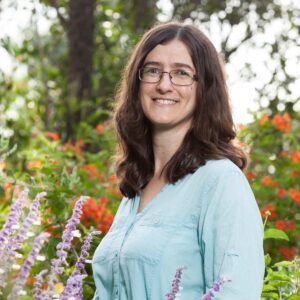It can be hard to remember what landscaping tasks to tackle when. Lucky for you, there’s a quick reference guide to San Antonio gardening to-dos.
Think fast – when is the best time to prune roses or plant trees in San Antonio? Sometimes it’s hard to remember the ideal months for all those gardening tasks, especially if you are a South Texas transplant like me.
So, I’ve put together a quick reference guide to common landscaping tasks. Dig into more details by exploring our maintenance section and garden articles.
Planting
San Antonio gardeners are in luck with two planting seasons — spring and fall.

- January leads the gardening season as the time to plant bulbs, rhizomes and corms for spring.
- Plant these sweet beauties in mid-February and if needed, move them in November.
- Annuals in April and November. Plant portulaca, impatiens and other warm-season annuals in April. Cyclamen, snapdragons, geraniums and other cool-season annuals can be planted November through January. Keep in mind annuals require more water than perennials.
- Palms and succulents go in the ground May to September. Find the best palms for your yard.
- Wildflowers are planted September to mid-November. Learn how to successfully seed wildflowers.
Pruning
Find out where to make the cut in our pruning videos.

- Roses: Mark your calendars to prune back by one-third around Valentine’s Day in mid-February.
- Perennials: Prune your perennials back in late February or first week of March. Deadhead July to August, if desired.
- Oak trees: December to mid-February and mid-June to September are your windows to prune oaks to avoid oak wilt. More importantly, painting wounds is 100% successful in preventing the disease.
- Spring-blooming trees and shrubs: Prune spring-flowering trees and shrubs soon after they bloom to encourage flower bud growth for next year.
- Shade trees, palms and ornamental trees that don’t bloom in spring: Only prune if needed December to January.
Fertilizing
Nutrients are important for healthy plants, but remember fertilizer is not the cure for issues like un-adapted plant selections, soil compaction, poor drainage and improper planting or watering. Always avoid fertilizing when it may rain as it can run off and pollute streams.

- Roses can be fertilized in February and October. Apply one-third to one-half cup of slow-release fertilizer and water well.
- Lawns. Aerate and apply one-quarter inch of compost in February and leave your lawn clippings in place instead of using chemical fertilizers.
We don’t recommend synthetic chemical fertilizers, but you may choose a slow-release fertilizer with a 3-1-2 NPK ratio and apply at no more than one pound of nitrogen per 1000 square feet of lawn. Fertilize around April 15 and in mid-October.
- Mulch your landscape beds in May and September.
- Shrubs showing iron chlorosis may be fertilized in May. Apply a chelated iron product, if needed.
- Trees may be fertilized in November. Mature trees and shrubs may require little to no fertilizer, for example once every 3-5 years. But if it’s determined to be necessary, use one pound of nitrogen per 1,000 square feet of root zone.
Weeding and Herbicides
In San Antonio, the time to apply herbicide is different than when you apply fertilizer. Skip “weed-and-feed” products.
 Lawns can be treated mid-month in February and September. Apply a pre-emergent product to help prevent weeds and then re-apply six weeks later. Ask your local garden center for a recommendation.
Lawns can be treated mid-month in February and September. Apply a pre-emergent product to help prevent weeds and then re-apply six weeks later. Ask your local garden center for a recommendation.- Spot treat weeds with an orange oil and vinegar mixture. Wear gloves and eye protection, and spray when it is hot and sunny.
- Watch Weeding the WaterSaver Garden for more helpful ideas.
Watering
We’ve got a method or two for keeping plants healthy and your wallet happy while conserving water.
- Use our 3-2-1 Watering Method to establish new plants.
- Water seasonally, only when needed during each season, to save up to 30 percent or more of your annual water use.
- During winter months, use the holiday watering method.
This quick overview just scratches the surface, but remember you can always dig into the details of these topics at GardenStyleSA.com.


